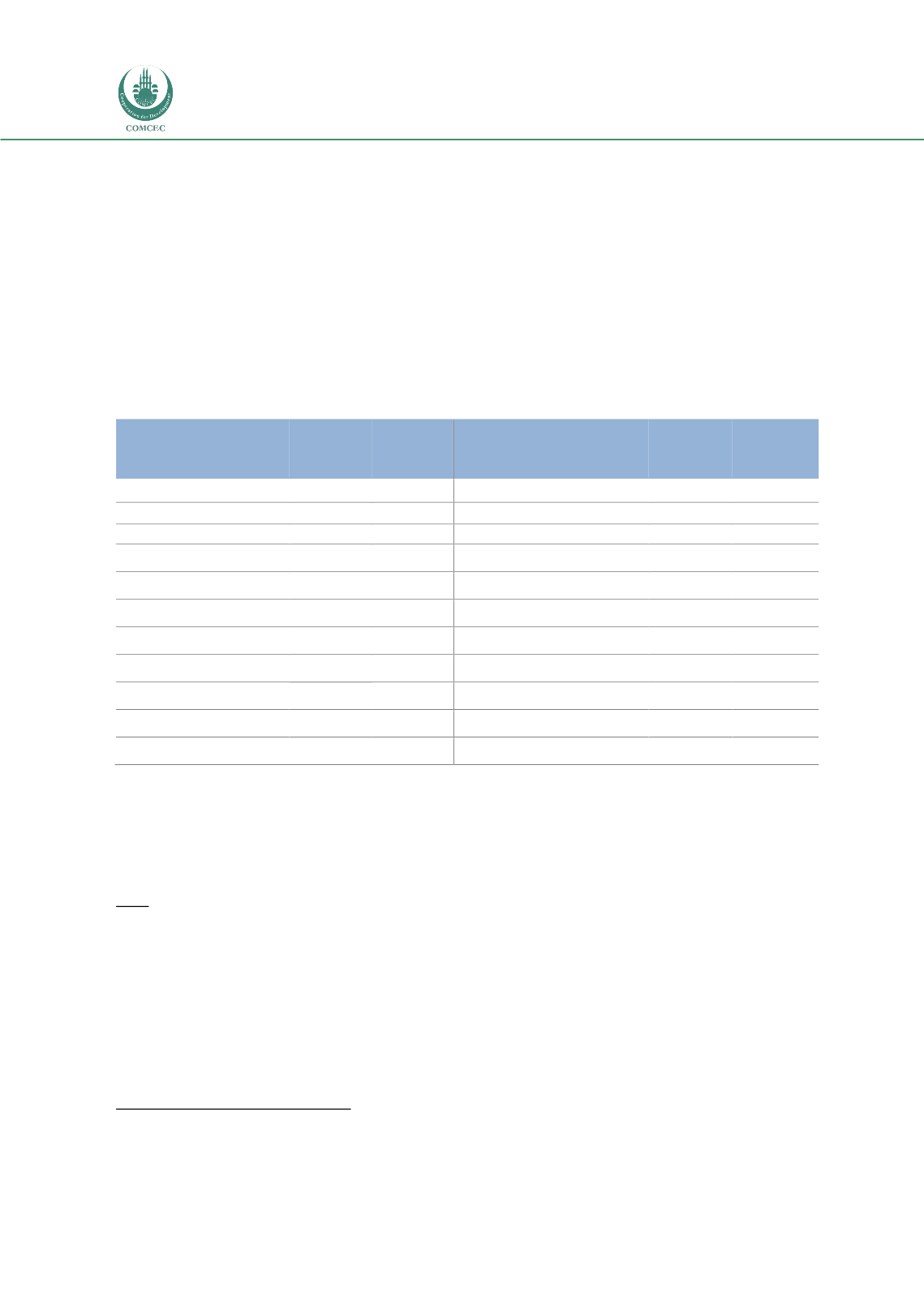

Facilitating Smallholder Farmers’ Market Access
In the OIC Member Countries
56
1990–92 and 2010–12. In 2010–12, although rice remained the dominant source of farm
revenue, other agricultural products (including potatoes, milk, and fruit) garnered a
greater share of earnings.
Bangladesh is a net importer of agricultural commodities; the main agricultural imports in
2011 included vegetable oils (palm oil), wheat, cotton lint, and sugar. The main
agricultural exports are jute, tobacco, vegetables, and cotton waste
(Table 10). Only 3.1
percent of merchandise exports consist of agricultural raw materials. Food imports as a
share of merchandise imports rose steadily from 16.5 to 22.5 percent between 2000 and
2007; over the same period, food exports declined from 7.6 percent to 6.5 percent.
TABLE 10: BANGLADESH’S TOP IMPORTS AND EXPORTS BY VALUE (2005 US$ THOUSANDS)
Imports
Average
(1989–
91)
Average
(2009–
11)
Exports
Average
(1989–
91)
Average
(2009–
11)
Wheat
293,979
293,979
Jute
129,747
175,336
Oil, soybean
134,752
134,752
Tobacco, unmanufactured
2,795
52,443
Cotton lint
131,526
131,526
Vegetables, fresh nes
9,654
11,362
Milk, whole dried
76,851
76,851
Cotton waste
n/a
11,012
Peas, dry
33,829
33,829
Sesame seed
n/a
5,841
Oil, palm
27,039
27,039
Potatoes
8*
5,077
Onions, dry
16,915
16,915
Tea
53,450
4,843
Lentils
9,105*
9,105
Cotton lint
277
4,751
Sugar, raw centrifugal
1,669
1,669
Pastry
n/a
4,318
Maize
118*
118
Beverages, non-alcoholic
n/a
3,939
Cake, soybeans
5*
5
Nuts, nes
n/a
3,252
Source:
Authors’ calculations, based on FAOSTAT (FAO 2014) and World Development Indicators (World Bank
2014h).
Note:
* denotes that data were not available for all years.
Smallholders’ participation in staple food markets
R
ICE
Bangladesh has experienced sustained growth in rice production for the last three
decades.
108
Between 1971/72 and 2007/08, rice area increased marginally from 9.3
million hectares to 10.6 million hectares, while production surged from 14.6 to 43.2
million tons. Most of the increased rice production in Bangladesh since 1980 has come
from greater production of boro rice in January–May. Traditionally the aman crop was the
main rice crop, grown in August–December when farmers could rely on the monsoon and
seasonal flooding of rivers and streams. Prior to the mid-1980s, the boro harvest was
relatively small, constituting only about 15 percent of production over 1973–80. After
108
This section draws on World Bank (2008); this section and the next draw heavily on Reardon et al.
(2012).

















